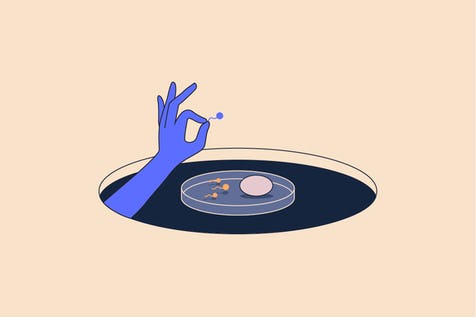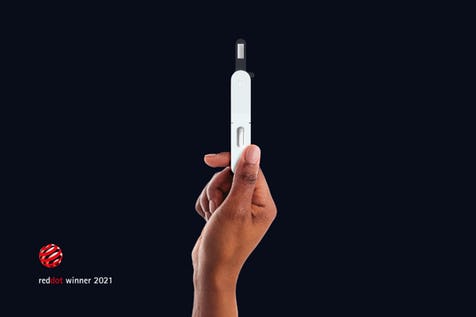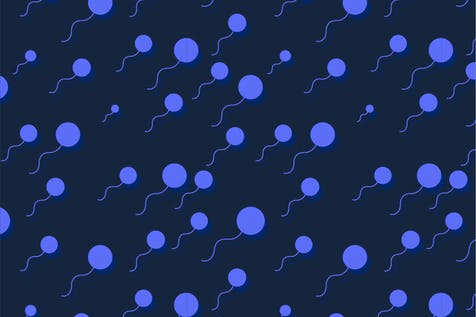Forty years ago, Louise Brown became the first baby to be born through in vitro fertilisation (IVF). Over nine million babies later, IVF is often considered the miracle treatment for infertility. Despite the success stories, the reality is that IVF remains a complicated medical process. It can often come at a high cost, both financially and physically, and many women find themselves undergoing IVF with little understanding of what the process will mean for them. In this blog we explore IVF, taking you through the process from start to finish, and giving you all the facts you need before you start your journey.
What are the reasons for using IVF?
IVF was originally developed as a way to overcome infertility caused by blocked Fallopian tubes. This is because IVF enables fertilised embryos to be transferred directly into the uterus, bypassing the tubes. Nowadays, IVF is used to treat a much wider range of fertility problems. These can include female infertility issues that impact the implantation of the fertilised egg, including endometriosis or uterine fibroids, or problems with ovulation caused by conditions such as PCOS (2). IVF can also assist in male infertility which is commonly caused by low sperm count, abnormal sperm morphology, blocked sperm ducts, or poor sperm motility.
How else can IVF be used?
IVF can also be used in combination with genetic testing if you or your partner are at risk of passing on a genetic disorder to your child. Before transfer to the uterus, embryos created by IVF can be tested for specific genetic disorders using a procedure known as preimplantation genetic diagnosis (PGD). After testing, unaffected embryos can then be selected for transfer to the uterus. PGD is only possible in certain countries and is usually tightly controlled with strict criteria on the types of diseases that can be tested for. PGD shouldn't be confused with preimplantation genetic screening (PGS) which tests embryos for potential genetic abnormalities even if there is no known risk of an inherited disorder.
IVF can additionally be an option for those who would like to preserve their fertility following treatment for cancer. Certain types of cancer treatment including chemotherapy or radiotherapy can damage the follicles containing the eggs in the ovary or the stem cells that produce the sperm in the testes leading to infertility (3). Eggs or sperm can be frozen before treatment and cryopreserved for later IVF or eggs can be fertilised and stored as embryos.
What happens during IVF?
IVF involves a number of different steps including ovarian stimulation, retrieval and preparation of the egg and sperm, fertilisation, and embryo transfer.
1. Ovarian stimulation
The cycle of IVF begins with stimulation of the ovaries using gonadotropins (usually follicle-stimulating hormone (FSH) alone or in combination with luteinizing hormone (LH)) in a process known as ovarian stimulation (4). Gonadotropins are typically started daily on day two or three of the cycle. Ovarian stimulation causes multiple ovarian follicles in the ovary to develop as opposed to the one follicle that usually matures in a natural cycle.
Alongside ovarian stimulation, drugs are often given to suppress ovulation by preventing the natural surge of LH to make the controlled retrieval of the eggs easier. The two most common drug protocols for the suppression of ovulation are (4):
-
GnRH-agonist (gonadotropin-releasing hormone agonist) starting on menstrual cycle day 21 in the preceding cycle and continuing throughout ovarian stimulation. While GnRH usually triggers the release of the gonadotropins in the body the continuous administration has the opposite effect and turns off the secretion of LH and FSH.
-
GnRH-antagonist to block the LH surge starting on cycle day 6 or when follicles reach 14 mm in diameter.
Once ovarian stimulation has been initiated follicle growth is monitored by vaginal ultrasound and blood hormone levels. When the follicles reach 16 - 18 mm in size human chorionic gonadotropin (hCG) is used to drive the final maturation of the eggs. Administration of hCG is a substitute for the normal LH surge.
2. Egg and sperm retrieval
Egg retrieval is performed 34 - 36 hours after the hCG injection. It is done using an ultrasound-guided needle that pierces the vaginal wall to reach the ovaries. Through the needle, each mature follicle can be punctured and the egg and accompanying fluid retrieved. While egg retrieval is taking place your partner will be asked to provide a semen sample.
IVF procedures can also be carried out using donor eggs, sperm, or embryos, and may also involve a surrogate or gestational carrier. A surrogate is a woman who becomes pregnant with sperm from the male partner of the couple. A gestational carrier becomes pregnant with an egg from the female partner and the sperm from the male partner.
3. Egg and sperm preparation
Following retrieval, eggs that are most suitable for fertilisation are selected. This is typically done based on the morphology of the cells which surround the egg, also known as cumulus cells (5). Using this approach your embryologist can quickly identify which eggs are at a stage known as metaphase II which means they are pre-ovulatory and ready to be used.
The semen sample is also prepared for fertilisation through a process known as sperm washing. Sperm washing removes the seminal plasma and any non-motile sperm in the semen to improve chances of fertilisation. It also promotes the process of capacitation which allows the sperm to penetrate and fertilise the egg.
Two common methods for sperm washing include the swim-up (SU) technique in which the sperm are spun down in a centrifuge and allowed to swim up into a cell-free layer of media and density gradient centrifugation (DGC) which separates sperm based on their ability to pass through an increasing density gradient during centrifugation (6).
4. Fertilisation
For fertilisation to take place the sperm and egg are incubated together in a dish. Approximately 50,000 - 100,000 sperm are used per egg and incubation is performed for 16 - 24 hours. Although some studies suggest that a shorter incubation time of 1 - 4 hours results in higher pregnancy rates (7).
If sperm motility is impaired, IVF can be combined with intracytoplasmic sperm injection (ICSI) which involves the direct injection of one immotile sperm into the egg (1). This bypasses the need for the sperm to penetrate the outer layer of the egg known as the zona pellucida.
In some types of male infertility (specifically low sperm count or poor motility), a less invasive technique known as intrauterine insemination (IUI) can be used. In this process, a sperm sample is washed and concentrated, and placed directly into the uterus around the time of ovulation.
5. Embryo transfer
Fertilised embryos are transferred three days after fertilisation (at the cleavage stage) or five days after fertilisation (at the blastocyst stage). When transferred at the blastocyst stage, the live birth rate per embryo transfer is higher, and fewer embryo numbers are needed (8). The downside to this is that fewer embryos may be available due to a lower survival rate in culture by day five.
Embryos are transferred under ultrasound guidance to your uterus through a thin, plastic catheter, which goes through your vagina and cervix. Several embryos may be transferred to improve the chances of implantation and pregnancy.
Embryo transfer can be done via a fresh or frozen transfer. A frozen transfer is done in a non-stimulated cycle and involves thawing and transferring embryos that were created and cryopreserved in a previous IVF cycle. In a fresh transfer embryos created from newly retrieved eggs are transferred in the current stimulated IVF cycle.
6. Luteal support
During the luteal phase of the menstrual cycle, progesterone released by the corpus luteum prepares the endometrium for pregnancy. In IVF cycles, however, progesterone levels are low. As low progesterone levels may lower the chance of implantation, the luteal phase needs to be supported. This is usually done using progesterone, hCG (which stimulates progesterone production), or GnRH-agonists. While research shows that such drugs can improve pregnancy rates, studies are continually ongoing to find the best combination of drugs for luteal support (9).
IVF and inne
Being on top of your menstrual cycle is absolutely key to both you and your healthcare team during your IVF journey. Using inne can help you keep track of all the important time points throughout the process, whether you are starting a new drug protocol, scheduling an appointment to see your embryologist, or working out when to take your pregnancy test.
References
-
Choe J, Archer JS, Shanks AL. In Vitro Fertilization. In StatPearls (Updated 2020 Sep 10).
-
Walker MH & Tobler KJ. Female Infertility. In StatPearls (Updated 2020).
-
Anderson RA, Mitchell RT, Kelsey TW, Spears N, Telfer EE, Wallace WH. Cancer treatment and gonadal function: experimental and established strategies for fertility preservation in children and young adults. Lancet Diabetes Endocrinol. 3, 556-67 (2015).
-
Shrestha D, La X, Feng HL. Comparison of different stimulation protocols used in in vitro fertilization: a review. Ann Transl Med. 3, 137 (2015).
-
Ebner T, Moser M, Sommergruber M, Tews G. Selection based on morphological assessment of oocytes and embryos at different stages of preimplantation development: a review. Hum Reprod Update. 9, 251-62 (2003).
-
Oseguera-López I, Ruiz-Díaz S, Ramos-Ibeas P, Pérez-Cerezales S. Novel Techniques of Sperm Selection for Improving IVF and ICSI Outcomes. Front Cell Dev Biol. 29, 298 (2019).
-
Huang Z, Li J, Wang L, Yan J, Shi Y, Li S. Brief co-incubation of sperm and oocytes for in vitro fertilization techniques. Cochrane Database Syst Rev. 4, CD009391 (2013).
-
Glujovsky D, Farquhar C, Quinteiro Retamar AM, Alvarez Sedo CR, Blake D. Cleavage stage versus blastocyst stage embryo transfer in assisted reproductive technology. Cochrane Database Syst Rev. 6, CD002118 (2016).
-
van der Linden M, Buckingham K, Farquhar C, Kremer JA, Metwally M. Luteal phase support for assisted reproduction cycles. Cochrane Database Syst Rev. 7, CD009154 (2015).




